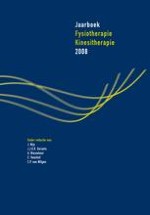Samenvatting
Epidemiologisch onderzoek laat een sterke relatie zien tussen fysieke activiteit en cognitie. Bij ouderen zonder dementie hebben behandelprogramma’s bestaande uit fysieke activiteit een positief effect op het cognitieve functioneren en met name op de executieve functies. Bij ouderen mét dementie is echter slechts beperkt onderzoek gedaan waarin fysieke activiteit als behandeling wordt aangeboden. De onderzoeken die er zijn vertonen vaak methodologische beperkingen en de resultaten zijn niet consistent. Uit literatuuronderzoek blijkt een mogelijke verklaring voor de inconsistente uitkomsten. Het aanbieden van fysieke activiteit ter verbetering van de cognitie hoeft niet gunstig te zijn voor ouderen met dementie die lijden aan vasculaire ziekten zoals hypertensie en hart- en vaatziekten. Verondersteld wordt dat er bij aanwezigheid van vasculaire ziekten minder bloed naar de hersenen gaat tijdens fysieke inspanning. Deze veronderstelling dient nader onderzocht te worden.
